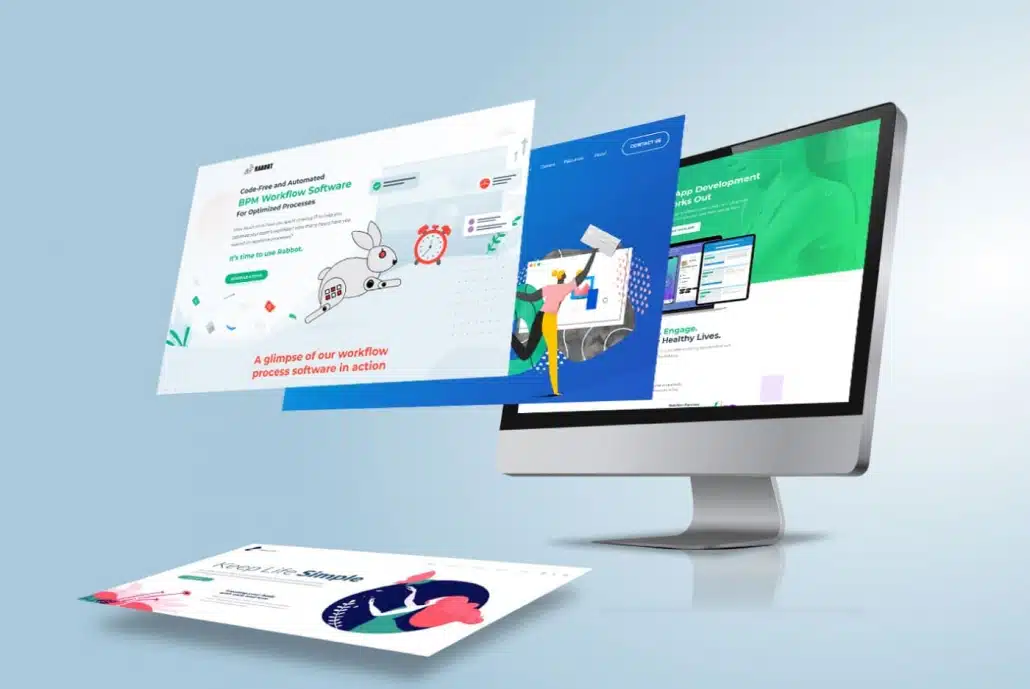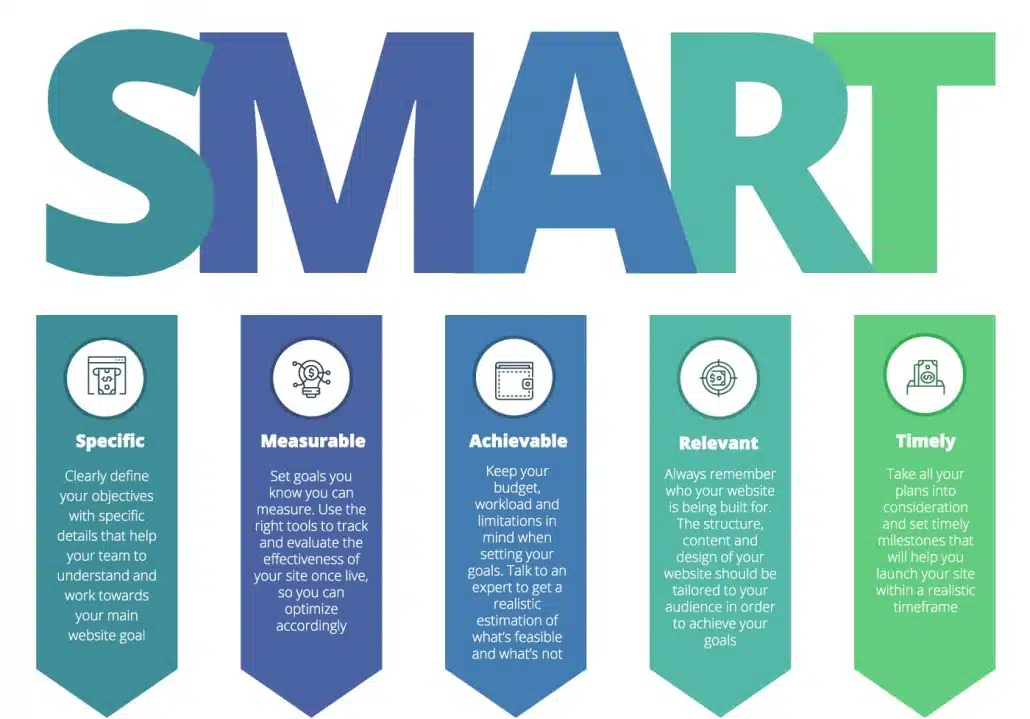Table of Contents
Your website is the face of your brand – your window into the world of the web.
If executed right, it can become the bridge of communication between you and your customers as well as one of the most effective ways to establish your online presence. By building your own website from scratch and tapping into your strengths online, you will start to attract a regular stream of leads and see a significant increase in sales. But with over 1.5 billion websites on the World Wide Web today, it is no easy challenge trying to stand out from the crowd and get noticed by your target audience.  Luckily, there are certain steps you can follow to ensure you shine brightly through all that online noise. So what does it actually take to bring a brand to life online?
Luckily, there are certain steps you can follow to ensure you shine brightly through all that online noise. So what does it actually take to bring a brand to life online?
1. Define Your Strategy Before You Build Your Own Website From Scratch
Before getting down to the nitty gritty of building your website, it’s essential to identify your objectives and define your SMART goals. It may sound obvious, but it’s extremely easy to get lost in the excitement of the initial idea and jump headfirst into the project without laying out a structured plan. By clearly establishing what you are hoping to achieve, you guarantee consistency and clarity for all members involved, as well as ensure all your conversion points are geared towards the same main objective. Setting SMART goals are a great way to focus your efforts and reach your targets.
Example SMART goal:
Increase conversion rates by 5% within the first 6 months after launching.
What makes this goal SMART?
- The example is quantifiable and specific. The target is 5% and the objective: to increase conversion rates, is simple and clear.
- Progress can be tracked and measured using web analytics and marketing automation tools such as Google Analytics.
- You can check industry averages and review your current numbers before setting your attainable and realistic goal.
- The initial research you conduct to understand your buyer personas will ensure that the content and design you implement is relevant to your target audience.
- The goal clearly indicates the time frame you should aim to stick to. This gives you the chance to calculate timings realistically and ensure you have the room to test and optimize before your website goes live.
2. Conduct competitor research to gain market insights
Before you dive in and follow the tips for building a great website, you should research to find out the expectations and needs of your target market group. After all, a little casual stalking of your main competitors never did anybody any harm! It’s a great way to gain insights into what is and isn’t working in your market. Take a look at the brands who are killing it online and try to identify their websites’ strengths and weaknesses. Are there any gaps in the information they provide? What are they doing well? Take note of their techniques, features, offers, design and voicing before thinking in more depth about where your company fits within the online marketplace. By finding inspiration in your competitors’ websites, you can take ideas from their online presence, understand what’s effective, and build upon that to make it your own. To make your website more impactful. To make it shine on its own merit. To make your website speak louder. To make it capture the attention of your ideal customers. Essentially, to make your website stand out amidst all that online noise.
3. Choose the tools and partners you need to get the job done.

4. Follow SEO and content best practices
Optimizing your website to rank higher on Google is key to being found. It doesn’t matter how beautiful and informative your newly built site is. If you haven’t tapped into SEO best practices, your chances of becoming visible are slim. With over 200 factors on Google’s algorithm defining the results people see, you need to know how to ‘outsmart’ the algorithm and boost your website ranking. Luckily, there are certain tips for building a great website that you can use to keep on the right track: ★ First, you should conduct a keyword research to explore topics and gain insights into the keywords that are most likely to bring more valuable users to your site. ★ Next, if you have an existing site you are trying to revamp, you should run a more comprehensive SEO audit to identify broken links, missing meta titles and descriptions, unreadable images or pages that are taking too long to load. If you are planning to build your website from scratch, working with an SEO expert will also help you set things up properly and avoid ever making such mistakes in the first place. ★ You can then use the insights gained to tailor your messaging and increase your chances of being found. By combining keywords with engaging content that resonate with your audience, you will capture your visitors’ attention and nurture them into loyal customers. ★ Adding the right conversion points in the right places will increase your lead generation rates and boost growth for your company. In this actionable marketing ideas guide, we offer heaps of recommendations you can follow to reach your target conversion rates. From Calls to Action to Landing Pages, there are many tactics you can tap into to help your visitors along their journey to becoming loyal happy customers. ★ You may also consider creating a blog to drive more traffic to your website, increase your online visibility and establish your company as a thought leader in your industry. Blogging is a long-term tactic to help build trust with your prospects and provide valuable information that helps simultaneously overcome their challenges and demonstrate your authority. By following these best practices, you are setting your website up for success and ensuring your target audience will turn to you to find the answers they are looking for.
5. Create an intuitive and user-friendly design
It takes 50 milliseconds for your visitors to decide whether they like your website enough to stick around or not. So there’s no doubt about it, if you’re serious about building a great website, you will need a designer’s vision and creativity on board. Making your site original, dynamic and easy to read can greatly impact your chance of success. Information should be laid out clearly and your site should be eye catching and easy to navigate. Your copywriters and designers need to work closely together to find the right balance between educational and creative, so both your imagery and wording capture their attention and convert them into leads. By playing around with sizes, colors and fonts, you can highlight the most important information and make your CTA’s stand out. Another best practice is to use software for creating mockups and wireframes, such as UXPin, so your designers can collaborate with the rest of the team; giving you the chance to visualize their progress and make amendments before any code is written. Main takeaway: Your designers are creating the face of your online presence. Choose them wisely and see your conversion rates rise.
6. Write the right code!







